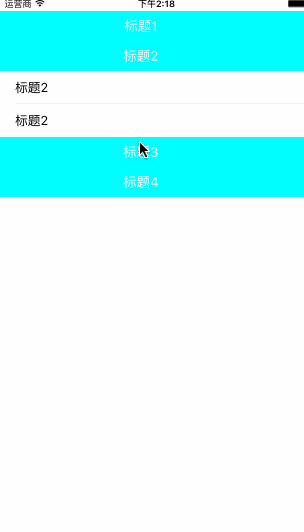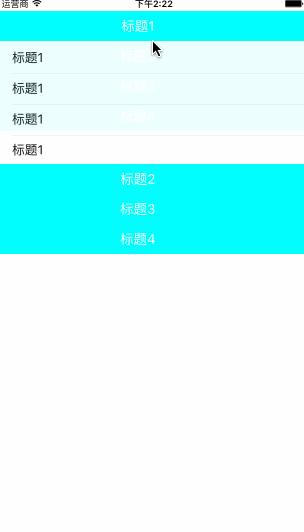闭包在循环事件绑定中的应用场景描述:在页面上有3个button按钮,当点击每个按钮时输出当前按钮的索引值,要求用循环来绑定每个按钮的事件,看下面的代码。button1button2button3varbuttons=document.querySelectorAll('button');for(vari=0;i
【 <一> 炼丹初探:JavaWeb 的起源与基础】之 JavaWeb 项目的部署:从开发环境到生产环境
Foyo Designer
firefox前端改行学it经验分享学习方法程序人生
点击此处查看合集https://blog.csdn.net/foyodesigner/category_12907601.html?fromshare=blogcolumn&sharetype=blogcolumn&sharerId=12907601&sharerefer=PC&sharesource=FoyoDesigner&sharefrom=from_link一、开发环境:写代码的“温床”在
QT之QComboBox详细介绍
小小怪同学の
qt开发语言
此篇文章来源于自己在使用QComboBox类的时候相对其重写而总结的其成员函数知识点,本人能力有限,欢迎大家评论区评论,共同学习一、QComboBox介绍QComboBox是QtGUI库中的一个核心组件,它是一个复合型图形用户界面控件,常用于提供一种紧凑的方式来展示可选项列表。QComboBox通常表现为一个下拉列表框,包含一个文本标签区域和一个下拉箭头按钮,点击箭头时会显示出可供选择的项目列表。
首个国产AI编辑器Trace的安装及使用教程
除了编程啥都会
编辑器
关于国产AI编辑器Trace安装教程进入Trace官网,下载适合你系统的安装包。Trace官网https://www.trae.com.cn/download双击安装包进行安装安装完成打开Trace,点击登录登录成功后就可以使用大语言模型进行项目开发了!
绘图神器draw.io下载
独木人生
IT工具draw.io
你可以在draw.io的官方网站(https://www.draw.io/)上下载绘图神器draw.io。官方网站提供了针对不同操作系统的下载选项,包括Windows、Mac、Linux等。只需点击对应的操作系统下载链接,然后根据提示进行安装即可。
【实战ES】实战 Elasticsearch:快速上手与深度实践-6.2.2GDPR数据脱敏处理
言析数智
实战elasticsearch大数据搜索引擎
点击关注不迷路点击关注不迷路点击关注不迷路文章大纲6.2.2GDPR数据脱敏处理深度实践指南1.GDPR核心要求映射1.1关键条款与技术要求1.2`数据类型与脱敏策略`2.全链路脱敏配置2.1`动态脱敏管道`2.2静态脱敏模板3.`脱敏算法性能对比`3.1算法性能矩阵3.2存储成本分析4.企业级合规方案4.1金融行业案例4.2医疗行业方案5.合规性验证方案5.1自动化检查脚本5.2审计检查清单6.
three.js 鼠标点击获取模型对象
lucky_zouzou
javascript开发语言ecmascript
three.js创建模型后,想要实现点击模型获取模型对象触发相应事件。可以使用它提供的APITHREE.Raycaster()https://threejs.org/docs/index.html?q=Raycaster#api/en/core/Raycaster//监听点击事件window.addEventListener('click',(event)=>{event.preventDefau
React,antd实现自动滚动Table封装组件
前端CV攻城狮
工作中遇到有意思的东西react.jsjavascript前端
这一版在使用过程中会出现一个页面引用多个该组件,获取dom出错的问题,加强版自滚动table已上传点击跳转加强版自滚动组件只是根据工作需要,简单写了这种方如有不妥,你就当看不见…如有好的建议,私我/评论即可.MD参数名称|注释|默认值rollNum|超过多少条开始自动滚动|10rollTop|滚动速度|1.5rollTime|滚动时间|100msscroll|表格大小|y:500pxx:100%f
Click Event Simulation:无需浏览器触发动态数据加载
亿牛云爬虫专家
python代理IP爬虫代理浏览器动态数据ClickEvent模拟点击python爬虫代理代理IP
一、明确目标与前置知识目标使用Python模拟点击事件,直接发送HTTP请求采集拼多多上商品价格和优惠信息。采用爬虫代理(代理IP)的技术,设置好Cookie和User-Agent,以防止被目标网站屏蔽。利用多线程技术加速数据采集,提高效率。前置知识基本的Python编程知识HTTP协议与请求头、Cookie的概念多线程编程基础(如线程、队列的使用)代理IP的使用原理二、按步骤拆解操作1.环境准备
数据监控工具Mixpanel的简易使用教程
alankuo
大数据
Mixpanel的使用教程如下:注册与准备创建账号:访问Mixpanel官方网站,按照提示填写相关信息创建账号。登录后,在项目设置中可以获取项目密钥。了解基本概念:明确事件、用户属性等基本概念。事件是用户在应用中的操作,如点击按钮、完成注册等;用户属性是描述用户特征的信息,像年龄、城市、会员等级等。集成SDKWeb应用:在HTML文件中引入MixpanelJavaScriptSDK。在页面的标签内
Android 碎片视图生命周期与按钮事件处理
t0_54manong
android个人开发
在Android开发中,Fragment(碎片)是一个重要的组件,常用于创建多窗格UI或动态修改UI部分内容。本文将通过一个实例,探讨如何在Fragment中正确地设置按钮点击事件,并解释为什么在不同生命周期方法中设置监听器会导致不同的结果。问题描述假设你正在开发一个应用,包含一个菜单界面,其中有一个按钮用于从某个Fragment跳转到数据输入布局。按钮点击事件却无法响应,日志也没有任何输出。示例
PAG动画在Visual Studio Code 预览插件
好久没来,差点忘了还有个账号也好久没有写过博客,忘了咋写了...工作久了,觉得写出来有点啰嗦,不如直接去做,不愿意过多的花费时间在[输出]这件事上...最近写了个小小工具,方便在vscode内直接预览.pag格式的动画,如图直接点击.pag格式的文件即可看到效果为啥做这个东西呢,因为官方在线的那个预览时常打不开,因为引入了一个cdn的资源,那个资源经常挂掉,比较影响预览效果;又或者需要在代码内去运
Windows下安装kafka
计算机软件程序设计
环境搭建windowskafka分布式
在Windows系统下安装Kafka可以按照以下步骤进行:1.安装Java环境Kafka是基于Java开发的,因此需要先安装Java环境。下载Java:访问OracleJava下载页面或OpenJDK下载页面,选择适合你系统的Java版本(建议Java8及以上)进行下载。安装Java:运行下载的安装程序,按照提示完成安装。配置环境变量:右键点击“此电脑”,选择“属性”。点击“高级系统设置”,在弹出
使用格式工厂提取视频中的音频
小魚資源大雜燴
ffmpeg
选择输出格式:在格式工厂的左侧功能栏中,点击“音频”选项,会展开多种音频格式,根据自己的需求选择如“MP3”“WAV”“WMA”等作为输出格式。添加视频文件:点击“添加文件”按钮,在弹出的文件浏览器中,找到需要提取音频的视频文件,选中后点击“打开”,将视频文件导入到格式工厂中。也可直接将视频文件拖放到格式工厂的操作界面。设置音频参数(可选):点击“输出配置”或“选项”按钮,可以对音频的比特率、采样
智能体技术全解析:从基础到前沿,构建智能自动化系统
二川bro
智能AI自动化人工智能
智能体技术全解析:从基础到前沿,构建智能自动化系统前些天发现了一个巨牛的人工智能学习网站,通俗易懂,风趣幽默,这里分享一下给大家。点击跳转到网站。https://www.captainbed.cn/ccc文章目录智能体技术全解析:从基础到前沿,构建智能自动化系统一、智能体技术概述1.1智能体的定义与特征1.2智能体的分类二、智能体架构设计2.1智能体的核心组件2.2智能体的通信机制三、智能体构建指
AI 赋能软件开发:从工具到思维的全面升级
二川bro
智能AI人工智能
AI赋能软件开发:从工具到思维的全面升级前些天发现了一个巨牛的人工智能学习网站,通俗易懂,风趣幽默,可以分享一下给大家。点击跳转到网站。https://www.captainbed.cn/ccc一、AI如何改变软件开发1.1开发效率的提升代码生成:AI工具如GitHubCopilot可以自动生成代码片段,减少重复劳动错误检测:AI能够实时识别代码中的潜在错误和漏洞性能优化:AI可以自动优化算法和数
智能化工具助力施工安全监测:开启高效、精准的安全管理新时代
inscode_046
智能化工具助力施工安全监测:开启高效、精准的安全管理新时代最新接入DeepSeek-V3模型,点击下载最新版本InsCodeAIIDE引言在建筑行业中,施工安全一直是重中之重。随着科技的飞速发展,智能化工具的应用为施工安全监测带来了前所未有的变革。通过引入先进的AI技术,施工安全管理不仅变得更加高效和精准,还能显著降低事故发生率。本文将探讨如何利用智能化工具提升施工安全监测水平,并介绍一款能够极大
华为OD机试E卷 - 贪心歌手(Java & Python& JS & C++ & C )
算法大师
最新华为OD机试华为odjavapython华为OD机试E卷javascriptc++
最新华为OD机试真题目录:点击查看目录华为OD面试真题精选:点击立即查看题目描述一个歌手准备从A城去B城参加演出。按照合同,他必须在T天内赶到歌手途经N座城市歌手不能往回走每两座城市之间需要的天数都可以提前获知。歌手在每座城市都可以在路边卖唱赚钱。经过调研,歌手提前获知了每座城市卖唱的收入预期:如果在一座城市第一天卖唱可以赚M,后续每天的收入会减少D(第二天赚的钱是M-D,第三天是M-2D…)。如
redis学习笔记——不仅仅是存取数据
Everyday都不同
returnSourceexpire/delincr/lpush数据库分区redis
最近项目中用到比较多redis,感觉之前对它一直局限于get/set数据的层面。其实作为一个强大的NoSql数据库产品,如果好好利用它,会带来很多意想不到的效果。(因为我搞java,所以就从jedis的角度来补充一点东西吧。PS:不一定全,只是个人理解,不喜勿喷)
1、关于JedisPool.returnSource(Jedis jeids)
这个方法是从red
SQL性能优化-持续更新中。。。。。。
atongyeye
oraclesql
1 通过ROWID访问表--索引
你可以采用基于ROWID的访问方式情况,提高访问表的效率, , ROWID包含了表中记录的物理位置信息..ORACLE采用索引(INDEX)实现了数据和存放数据的物理位置(ROWID)之间的联系. 通常索引提供了快速访问ROWID的方法,因此那些基于索引列的查询就可以得到性能上的提高.
2 共享SQL语句--相同的sql放入缓存
3 选择最有效率的表
[JAVA语言]JAVA虚拟机对底层硬件的操控还不完善
comsci
JAVA虚拟机
如果我们用汇编语言编写一个直接读写CPU寄存器的代码段,然后利用这个代码段去控制被操作系统屏蔽的硬件资源,这对于JVM虚拟机显然是不合法的,对操作系统来讲,这样也是不合法的,但是如果是一个工程项目的确需要这样做,合同已经签了,我们又不能够这样做,怎么办呢? 那么一个精通汇编语言的那种X客,是否在这个时候就会发生某种至关重要的作用呢?
&n
lvs- real
男人50
LVS
#!/bin/bash
#
# Script to start LVS DR real server.
# description: LVS DR real server
#
#. /etc/rc.d/init.d/functions
VIP=10.10.6.252
host='/bin/hostname'
case "$1" in
sta
生成公钥和私钥
oloz
DSA安全加密
package com.msserver.core.util;
import java.security.KeyPair;
import java.security.PrivateKey;
import java.security.PublicKey;
import java.security.SecureRandom;
public class SecurityUtil {
UIView 中加入的cocos2d,背景透明
374016526
cocos2dglClearColor
要点是首先pixelFormat:kEAGLColorFormatRGBA8,必须有alpha层才能透明。然后view设置为透明glView.opaque = NO;[director setOpenGLView:glView];[self.viewController.view setBackgroundColor:[UIColor clearColor]];[self.viewControll
mysql常用命令
香水浓
mysql
连接数据库
mysql -u troy -ptroy
备份表
mysqldump -u troy -ptroy mm_database mm_user_tbl > user.sql
恢复表(与恢复数据库命令相同)
mysql -u troy -ptroy mm_database < user.sql
备份数据库
mysqldump -u troy -ptroy
我的架构经验系列文章 - 后端架构 - 系统层面
agevs
JavaScriptjquerycsshtml5
系统层面:
高可用性
所谓高可用性也就是通过避免单独故障加上快速故障转移实现一旦某台物理服务器出现故障能实现故障快速恢复。一般来说,可以采用两种方式,如果可以做业务可以做负载均衡则通过负载均衡实现集群,然后针对每一台服务器进行监控,一旦发生故障则从集群中移除;如果业务只能有单点入口那么可以通过实现Standby机加上虚拟IP机制,实现Active机在出现故障之后虚拟IP转移到Standby的快速
利用ant进行远程tomcat部署
aijuans
tomcat
在javaEE项目中,需要将工程部署到远程服务器上,如果部署的频率比较高,手动部署的方式就比较麻烦,可以利用Ant工具实现快捷的部署。这篇博文详细介绍了ant配置的步骤(http://www.cnblogs.com/GloriousOnion/archive/2012/12/18/2822817.html),但是在tomcat7以上不适用,需要修改配置,具体如下:
1.配置tomcat的用户角色
获取复利总收入
baalwolf
获取
public static void main(String args[]){
int money=200;
int year=1;
double rate=0.1;
&
eclipse.ini解释
BigBird2012
eclipse
大多数java开发者使用的都是eclipse,今天感兴趣去eclipse官网搜了一下eclipse.ini的配置,供大家参考,我会把关键的部分给大家用中文解释一下。还是推荐有问题不会直接搜谷歌,看官方文档,这样我们会知道问题的真面目是什么,对问题也有一个全面清晰的认识。
Overview
1、Eclipse.ini的作用
Eclipse startup is controlled by th
AngularJS实现分页功能
bijian1013
JavaScriptAngularJS分页
对于大多数web应用来说显示项目列表是一种很常见的任务。通常情况下,我们的数据会比较多,无法很好地显示在单个页面中。在这种情况下,我们需要把数据以页的方式来展示,同时带有转到上一页和下一页的功能。既然在整个应用中这是一种很常见的需求,那么把这一功能抽象成一个通用的、可复用的分页(Paginator)服务是很有意义的。
&nbs
[Maven学习笔记三]Maven archetype
bit1129
ArcheType
archetype的英文意思是原型,Maven archetype表示创建Maven模块的模版,比如创建web项目,创建Spring项目等等.
mvn archetype提供了一种命令行交互式创建Maven项目或者模块的方式,
mvn archetype
1.在LearnMaven-ch03目录下,执行命令mvn archetype:gener
【Java命令三】jps
bit1129
Java命令
jps很简单,用于显示当前运行的Java进程,也可以连接到远程服务器去查看
[hadoop@hadoop bin]$ jps -help
usage: jps [-help]
jps [-q] [-mlvV] [<hostid>]
Definitions:
<hostid>: <hostname>[:
ZABBIX2.2 2.4 等各版本之间的兼容性
ronin47
zabbix更新很快,从2009年到现在已经更新多个版本,为了使用更多zabbix的新特性,随之而来的便是升级版本,zabbix版本兼容性是必须优先考虑的一点 客户端AGENT兼容
zabbix1.x到zabbix2.x的所有agent都兼容zabbix server2.4:如果你升级zabbix server,客户端是可以不做任何改变,除非你想使用agent的一些新特性。 Zabbix代理(p
unity 3d还是cocos2dx哪个适合游戏?
brotherlamp
unity自学unity教程unity视频unity资料unity
unity 3d还是cocos2dx哪个适合游戏?
问:unity 3d还是cocos2dx哪个适合游戏?
答:首先目前来看unity视频教程因为是3d引擎,目前对2d支持并不完善,unity 3d 目前做2d普遍两种思路,一种是正交相机,3d画面2d视角,另一种是通过一些插件,动态创建mesh来绘制图形单元目前用的较多的是2d toolkit,ex2d,smooth moves,sm2,
百度笔试题:一个已经排序好的很大的数组,现在给它划分成m段,每段长度不定,段长最长为k,然后段内打乱顺序,请设计一个算法对其进行重新排序
bylijinnan
java算法面试百度招聘
import java.util.Arrays;
/**
* 最早是在陈利人老师的微博看到这道题:
* #面试题#An array with n elements which is K most sorted,就是每个element的初始位置和它最终的排序后的位置的距离不超过常数K
* 设计一个排序算法。It should be faster than O(n*lgn)。
获取checkbox复选框的值
chiangfai
checkbox
<title>CheckBox</title>
<script type = "text/javascript">
doGetVal: function doGetVal()
{
//var fruitName = document.getElementById("apple").value;//根据
MySQLdb用户指南
chenchao051
mysqldb
原网页被墙,放这里备用。 MySQLdb User's Guide
Contents
Introduction
Installation
_mysql
MySQL C API translation
MySQL C API function mapping
Some _mysql examples
MySQLdb
HIVE 窗口及分析函数
daizj
hive窗口函数分析函数
窗口函数应用场景:
(1)用于分区排序
(2)动态Group By
(3)Top N
(4)累计计算
(5)层次查询
一、分析函数
用于等级、百分点、n分片等。
函数 说明
RANK() &nbs
PHP ZipArchive 实现压缩解压Zip文件
dcj3sjt126com
PHPzip
PHP ZipArchive 是PHP自带的扩展类,可以轻松实现ZIP文件的压缩和解压,使用前首先要确保PHP ZIP 扩展已经开启,具体开启方法就不说了,不同的平台开启PHP扩增的方法网上都有,如有疑问欢迎交流。这里整理一下常用的示例供参考。
一、解压缩zip文件 01 02 03 04 05 06 07 08 09 10 11
精彩英语贺词
dcj3sjt126com
英语
I'm always here
我会一直在这里支持你
&nb
基于Java注解的Spring的IoC功能
e200702084
javaspringbeanIOCOffice
java模拟post请求
geeksun
java
一般API接收客户端(比如网页、APP或其他应用服务)的请求,但在测试时需要模拟来自外界的请求,经探索,使用HttpComponentshttpClient可模拟Post提交请求。 此处用HttpComponents的httpclient来完成使命。
import org.apache.http.HttpEntity ;
import org.apache.http.HttpRespon
Swift语法之 ---- ?和!区别
hongtoushizi
?swift!
转载自: http://blog.sina.com.cn/s/blog_71715bf80102ux3v.html
Swift语言使用var定义变量,但和别的语言不同,Swift里不会自动给变量赋初始值,也就是说变量不会有默认值,所以要求使用变量之前必须要对其初始化。如果在使用变量之前不进行初始化就会报错:
var stringValue : String
//
centos7安装jdk1.7
jisonami
jdkcentos
安装JDK1.7
步骤1、解压tar包在当前目录
[root@localhost usr]#tar -xzvf jdk-7u75-linux-x64.tar.gz
步骤2:配置环境变量
在etc/profile文件下添加
export JAVA_HOME=/usr/java/jdk1.7.0_75
export CLASSPATH=/usr/java/jdk1.7.0_75/lib
数据源架构模式之数据映射器
home198979
PHP架构数据映射器datamapper
前面分别介绍了数据源架构模式之表数据入口、数据源架构模式之行和数据入口数据源架构模式之活动记录,相较于这三种数据源架构模式,数据映射器显得更加“高大上”。
一、概念
数据映射器(Data Mapper):在保持对象和数据库(以及映射器本身)彼此独立的情况下,在二者之间移动数据的一个映射器层。概念永远都是抽象的,简单的说,数据映射器就是一个负责将数据映射到对象的类数据。
&nb
在Python中使用MYSQL
pda158
mysqlpython
缘由 近期在折腾一个小东西须要抓取网上的页面。然后进行解析。将结果放到
数据库中。 了解到
Python在这方面有优势,便选用之。 由于我有台
server上面安装有
mysql,自然使用之。在进行数据库的这个操作过程中遇到了不少问题,这里
记录一下,大家共勉。
python中mysql的调用
百度之后能够通过MySQLdb进行数据库操作。
单例模式
hxl1988_0311
java单例设计模式单件
package com.sosop.designpattern.singleton;
/*
* 单件模式:保证一个类必须只有一个实例,并提供全局的访问点
*
* 所以单例模式必须有私有的构造器,没有私有构造器根本不用谈单件
*
* 必须考虑到并发情况下创建了多个实例对象
* */
/**
* 虽然有锁,但是只在第一次创建对象的时候加锁,并发时不会存在效率
27种迹象显示你应该辞掉程序员的工作
vipshichg
工作
1、你仍然在等待老板在2010年答应的要提拔你的暗示。 2、你的上级近10年没有开发过任何代码。 3、老板假装懂你说的这些技术,但实际上他完全不知道你在说什么。 4、你干完的项目6个月后才部署到现场服务器上。 5、时不时的,老板在检查你刚刚完成的工作时,要求按新想法重新开发。 6、而最终这个软件只有12个用户。 7、时间全浪费在办公室政治中,而不是用在开发好的软件上。 8、部署前5分钟才开始测试。

